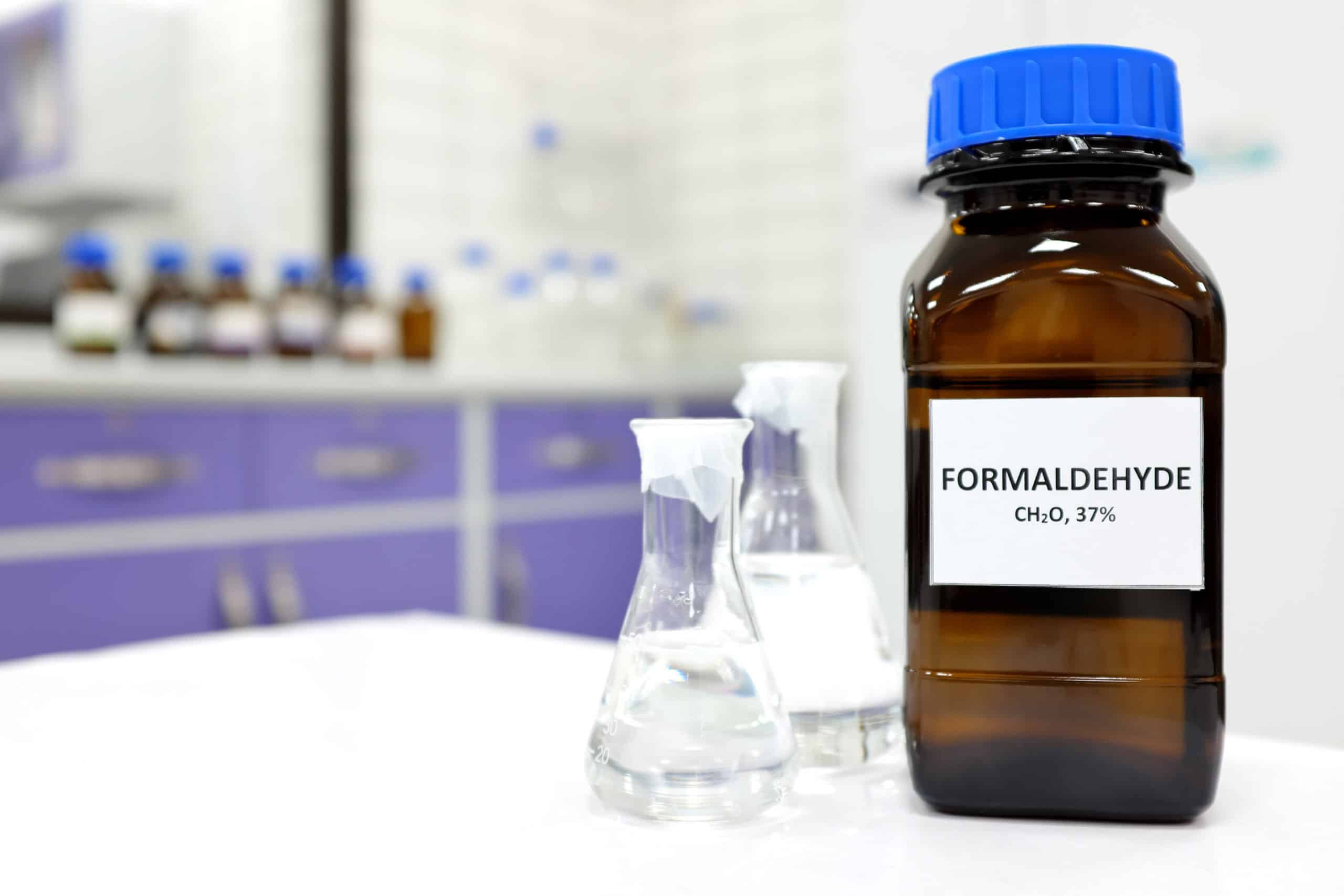It’s a good idea to limit your exposure to formaldehyde in your indoor air. So what’s the problem with formaldehyde?
Well, long-term significant exposure can have a carcinogenic effect. Formaldehyde is also bad for people with certain respiratory conditions, and it doesn’t smell good, to most people.
Some think of formaldehyde as a chemical you use in a school’s science department, but it’s actually in quite a few building materials and consumer products, too. There can be quite a bit of formaldehyde, for example, in new laminate flooring or wall cladding, or in new furniture, for example.

With that in mind, there are a number of ways that people get exposed to harmful levels of formaldehyde in their homes.
High Formaldehyde Levels in New Building
It can be enticing to think of moving into your dream house, a brand new building, custom built for you in a fancy subdivision. But inside, that home can be off-gassing formaldehyde from flooring, walls, you name it.
That’s one of the down sides to building new – all of the newly manufactured materials can harbor, not just formaldehyde, but other contaminants, too.
Excessive Formaldehyde in New Flooring
Other major exposure sometimes happens when people put new flooring into a room or part of a home.
When you’re installing new laminate or manufactured wood products, it’s important to look at the VOC rating of the chosen products, to see what levels of formaldehyde and other chemicals are included. Getting a cleaner product will be better for your long-term health, and the health of your family.
Formaldehyde Fumes: New Furniture and Other Consumer Products
Another source of formaldehyde in the air comes from new furniture pieces which can “off-gas” this and other chemicals over time. Newly manufactured sofas, loveseats, etc. will often have a “new furniture smell” that can actually represent chemicals being released into the air. The problem may be worse if the furniture was tightly wrapped in plastic for shipping and only became exposed to the air inside of a home.
In general, many of these new products, not just furniture, but anything from fitness gear to throw pillows, can have elements called VOCs, that get released into the indoor air, as explained in this Treehugger article:
“VOCs are essentially chemical compounds—many of them human-made—with high vapor pressure and low water solubility, so they’re often used as industrial solvents for products like paint, office equipment, building materials, and furnishings,” writes Katherine Gallagher. “The smell could be coming from your upholstery being treated with flame retardants, chemicals to protect the fabric, or the varnish from your wooden furniture. These solvents range from trichloroethylene and fuel oxygenates to chloroform and formaldehyde.”
So part of the problem is that formaldehyde is being used as a solvent in manufacturing. It can also be used as a disinfectant, but due to its health risks and its flammable properties, it’s not common in cleaner products. The main sources are items like furniture and manufactured wood products.
Ways to Mitigate the Effects of Formaldehyde in the Home
How do you keep formaldehyde in the home down to safer levels?
A lot of this kind of planning boils down to a few simple things that promote better airflow and indoor air quality.
Ventilation
Better ventilation means that you’re breathing less of formaldehyde and other scary stuff over time. It’s tempting to have houses sealed up tight for more efficient heating and cooling, but that leads to worse indoor air quality in many cases.
Whether it’s fans or other kinds of ventilation, this can be helpful in limiting your exposure to formaldehyde and other chemicals.
Off-Site Off-Gassing
As mentioned, the off-gassing process is where you get exposed to a lot of these harmful chemicals. With that in mind, if you let new products off-gas off-site or somewhere out in the open, they’re bringing less of this chemical mixture into your indoor air environment.
Air Purifiers
You can also use a range of modern air purifiers to actually cycle the air and clean it inside your home.
With the right size and power, you’re effectively scrubbing your indoor air of harmful items like formaldehyde.
Some models have a better capacity to handle things like formaldehyde.
The Airpura F700 may be a good choice if you also want particulate filtration, otherwise, for VOCs, the F700dlx is good. The Allerair Pro 5 Vocarb HD Model is also a top performer, and the Austin Air Healthmate Plus is another good option.
Don’t let formaldehyde and VOCs impact your health! Take a look and see what you can do to improve air quality in your home.